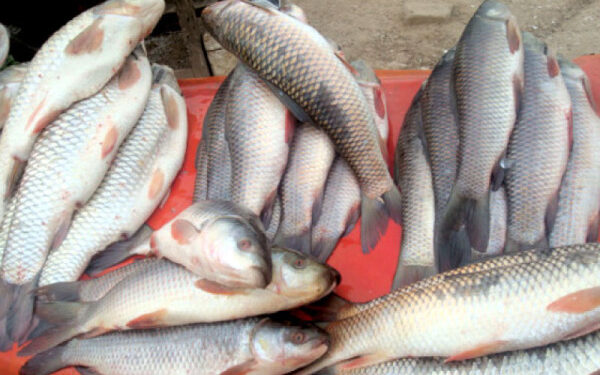In a landmark development for Pakistan’s fishing sector, Federal Minister for Maritime Affairs Muhammad Junaid Anwar Chaudhry has announced that Pakistan has officially received a 4-year permission to export fish and seafood products to the United States.
The decision marks a global recognition of the quality of Pakistani seafood and represents a turning point for the nation’s fisheries sector, which has long sought wider access to international markets. Industry stakeholders are hopeful that this milestone will not only boost exports but also stabilize Pakistan’s economy at a time of pressing financial challenges.
A Major Achievement for Pakistan’s Fisheries Sector
Minister Junaid Anwar Chaudhry confirmed that Pakistani seafood exporters have met the stringent standards required by US authorities, a process that involves rigorous inspections, certifications, and compliance with international food safety regulations.
He emphasized that the approval reflects the improving quality and safety standards of Pakistani marine products, adding:
“This permission is a global recognition of the hard work of our fisheries sector. Pakistani seafood has met international standards, and the continuity of exports to the US has now become possible.”
The US is one of the largest importers of seafood in the world, with annual imports exceeding $20 billion, making it a lucrative market for Pakistani exporters.
Economic Impact: Stabilizing Exports and Boosting Foreign Exchange
The seafood sector already plays a significant role in Pakistan’s export economy. According to official data:
- In 2024, Pakistan exported 242,000 tons of fish and seafood, earning around $489 million in foreign exchange.
- With the US market opening up, the government projects seafood exports could rise to $600 million in 2025.
- Over the next four years, cumulative earnings could exceed $2.5 billion, if the industry maintains compliance and efficiency.
The minister expressed optimism that the decision would stabilize export revenues, reduce dependency on a limited number of markets, and expand Pakistan’s seafood footprint on the global stage.
Pakistan’s Seafood Industry: Current Status
Pakistan’s fisheries sector has historically been underutilized, despite the country having one of the largest coastlines in South Asia — stretching over 1,000 kilometers along the Arabian Sea.
Key Features of the Industry:
- Pakistan has an Exclusive Economic Zone (EEZ) of 290,000 square kilometers, rich in marine life.
- More than 190 different fish species are found in Pakistan’s waters, including tuna, mackerel, shrimps, pomfrets, and lobsters.
- The sector provides livelihoods to over 1 million people, including fishermen, traders, processors, and exporters.
- Fisheries contribute around 0.4% to GDP and 2% to agricultural GDP, according to the Pakistan Bureau of Statistics.
However, despite its vast potential, the industry has often been plagued by low investment, poor infrastructure, and outdated fishing methods.
Why the US Approval Matters
The United States is among the most lucrative seafood markets in the world. Gaining access requires compliance with some of the strictest food safety and quality standards globally, set by agencies like the US Food and Drug Administration (FDA) and the National Oceanic and Atmospheric Administration (NOAA).
For Pakistan, this approval means:
- Diversification of Export Markets – Until now, Pakistan primarily exported seafood to China, the Middle East, and the European Union. Entry into the US market reduces over-reliance on a limited number of destinations.
- Higher Value for Exports – The US market typically offers higher prices compared to regional buyers, enabling exporters to earn more per ton of seafood.
- Global Recognition of Standards – Meeting US requirements signals to other importing countries that Pakistani seafood can meet international benchmarks, paving the way for access to Japan, Canada, and Australia.
- Encouragement for Investment – With long-term permission secured, both local and foreign investors may feel more confident investing in Pakistan’s seafood industry, particularly in processing and cold storage facilities.
Challenges Facing the Fisheries Sector
While the approval is a positive step, experts caution that Pakistan must address several long-standing challenges to fully benefit:
- Infrastructure Deficits: Many fish harbors and jetties lack modern facilities such as cold storage, ice plants, and hygienic processing centers.
- Overfishing and Sustainability Issues: Unregulated fishing practices threaten long-term stock availability.
- Compliance with Global Standards: Consistency in maintaining hygiene and food safety is critical to avoiding future bans.
- Smuggling and Informal Trade: A significant portion of fish is exported informally to neighboring countries, reducing official export revenues.
- Limited Value-Addition: Most exports are in raw or semi-processed form. Pakistan earns less compared to countries that export value-added products like fillets, frozen meals, or ready-to-cook items.
Government’s Role in Strengthening the Sector
To capitalize on the US export approval, the government has pledged several initiatives:
- Upgrading Fish Harbors in Karachi, Gwadar, and Pasni to meet international hygiene standards.
- Introducing modern fishing vessels and equipment to replace outdated wooden boats.
- Expanding cold chain facilities to preserve seafood quality during transport.
- Providing training programs for fishermen on sustainable fishing practices.
- Encouraging private sector investment in seafood processing and exports.
Minister Junaid Anwar Chaudhry stressed that sustained government support and private sector collaboration are essential for long-term growth.
Global Seafood Market: Where Does Pakistan Stand?
The global seafood market is estimated to be worth $200 billion annually, with Asia dominating both production and consumption. Key exporters include China, Vietnam, India, and Thailand.
Compared to its competitors, Pakistan’s share remains small, averaging $400–500 million annually. However, with improved infrastructure and access to high-value markets like the US, industry experts believe Pakistan could double its seafood exports within a decade.
Potential for Gwadar Port and CPEC
The development of Gwadar Port under the China-Pakistan Economic Corridor (CPEC) offers further opportunities for the fisheries sector. Gwadar, located near some of the richest fishing grounds in the Arabian Sea, could become a hub for:
- Processing and packaging seafood for export.
- Logistics and distribution to China, the Middle East, and Africa.
- Joint ventures with international companies in aquaculture and seafood processing.
Fishermen and Local Communities: Who Benefits?
The approval is not just a victory for exporters but also for local fishing communities. If managed correctly, it could:
- Increase incomes for fishermen by ensuring better prices for their catch.
- Create new jobs in processing plants, logistics, and exports.
- Encourage sustainable fishing practices with government regulation and training.
However, experts warn that without strong policies, the benefits might remain concentrated among large exporters rather than trickling down to small-scale fishermen.
Expert Opinions and Industry Reactions
Industry leaders and trade experts have welcomed the US decision:
- Pakistan Seafood Industries Association (PSIA) hailed it as “a historic breakthrough” that validates years of lobbying and investment in quality improvements.
- Economists believe the move will help Pakistan tackle its chronic trade deficit by diversifying export revenues.
- Environmental experts have urged the government to use this opportunity to enforce sustainable fishing laws, preventing overexploitation of marine resources.
Conclusion: A New Era for Pakistan’s Seafood Industry
The approval of a 4-year US export permission is more than just a trade agreement — it is a recognition of Pakistan’s ability to meet global standards and a chance to reposition the country in the global seafood supply chain.
If Pakistan can overcome its challenges in infrastructure, compliance, and sustainability, the fisheries sector has the potential to become a billion-dollar industry within the next few years. This milestone offers hope not only for exporters but also for fishermen, investors, and the wider economy.
For now, the message is clear: Pakistan’s seafood industry is open for business — and the world is ready to buy.

























